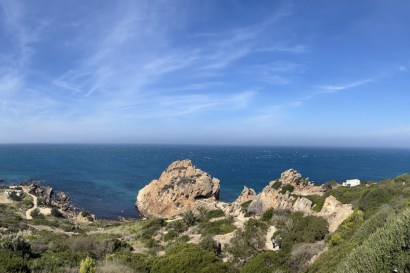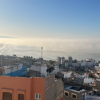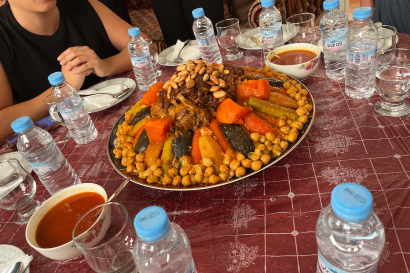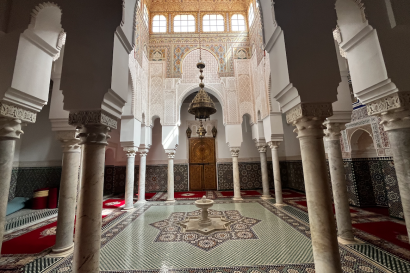Andalusia beholds the most fundamental expression of the cultural clash between the al-Andalus Islamic kingdoms of Iberia and the Catholic kingdom of Spain. From 711 to 1492, the overwhelming majority of Spain was ruled not by Catholic kings, but by the Islamic Empires. In Andalusia, the culture and history of that period is most present. Moreover, the region is littered with the history of Spain's global empire, as well as the ancient history of the Romans and Phonecians. For any student studying in Morocco, it is in my view imperative to visit Andalusia and explore the Arab, Spanish, and ancient history and culture that is present there today.
Although each site in Andalusia is unique and special, there are many commonalities that culminate in the culture of Andalusia. The region is home to precious examples of Islamic architecture and art. Geometric artwork is a style widely used by both Islamic civilizations and in Andalusia today. Flamenco dance is also a culmination of European and North African culture, as it is a style of dance originating from the Traveller ethnic group that arrived in Spain through passing through North Africa. It is a deep and complex form of dance that is filled with emotion, colors, tapping, singing and guitar that is widely practiced throughout the region. Spain has also left an indelible mark on the culture of the region, with elegant cathedrals and fabulous cuisines.
Sevilla
My first experience in Andalusia was spent in the region's capital of Sevilla. The city is most deeply cast in the history of the Spanish Empire, as it is the city Christopher Columbus first sailed from in his attempt to reach India. The Guadalkivir, which translates from Arabic into "big river," flows into the Atlantic ocean, and the city's location defended docked ships from North African pirates. As a matter of fact, the city claims to be the burial site of Christopher Columbus, although there is a rival claim in Santo Domingo.
The city's most prominent feature is the culmination of European and North African cultures. After the Spanish reconquest, the city's mosque was converted into the third largest cathedral in the world. This culmination of cultures is most evident in the church's bell tower, which was the mosque's minaret. The city also has the old Moorish palace, further displaying the former Islamic culture.
The city also exhibits some of the unpleasant realities of Spain's history. While I was there, Spain was celebrating Columbus Day weekend, which is an enormous festival in Sevilla. In the city, one can visit the Colonial Records office, which is a massive collection of the history of Spain's imperialism in the Americas and around the world. While these historical elements are troubling, it was an eye opening experience to see how the country embraces its colonial history, rather than questioning it.
On a less problematic note, I had my first exposure to Flamenco dance in Sevilla, which was a stunning and breathtaking performance. It is extraordinary how powerful of a sound the dancers make by tapping onto the wooden floor, it is a true sensation and one of my favorite parts of Andalusian culture. On this trip, I also had my first exposure to Spanish cuisine, which is truly magnificent. The best meal I enjoyed on this trip was a slow roasted pork butt. The Jamon Iberico is also an unrivaled delicacy that I simply cannot resist whenever I find myself in Spain.
Malaga
After leaving Sevilla, I headed southwest to Malaga. I only had a day in the city, but this was enough time to explore some of the thousands of years of history there. In the center of the city is an old Roman Theatre that is free to walk through. In the hill above the theatre is a Moorish Alcazar, a beautiful Arab Palace that overlooks the entire city. The Spanish period has also left an indelible mark on the city with a cathedral so ginormous, the city could not afford to finish building it.
Cordoba
Over a month later, I returned to Andalusia to visit the cities of Cordoba and Granada. Like Sevilla and Malaga, a wide breadth of history from the Romans to the Moors to the Spanish is present. The city square was laid by the Romans, and just a short walk from it are the ruins of the city's old forum. But the greatest site of all in the city is La Mezquita, which translates from Spanish as "the mosque." Cordoba was where the first Islamic kingdom in Spain ruled from, making the city an important cultural site. The mosque was built in the tenth century, and functioned as such until 500 years later when the Spanish reconquest arrived. Upon Spain's arrival, the mosque was converted into a church. It is one of the most peculiar and amazing historical sites I have ever seen, since the design of the mosque is not at all conducive to how Christian churches are built. There is a large and gorgeous chapel inside, but it is surrounded on all sides by the original architecture of the mosque. Like in Sevilla, the minaret was converted into a bell tower. There is also an open was area which was necessary for the five hundred years of Muslim prayer that happened there. All together, La Mezquita is a beautiful and crazy smashing together of Islamic and Catholic culture and tradition that is endemic to the history of Andalusia.
In Cordoba, I enjoyed one of my favorite meals of the semester, a slow roasted suckling pig over potatoes. The skin was perfectly crisp and delicious, and the meat inside melted in the mouth. Garlic cloves and white wine sauce made the base of the dish that the roasted potatoes absorbed. It was a true show of excellent flavor and the beauty of Spanish cuisine.
Granada
The Alhambra of Granada is one of Andalusia's most important and remarkable cultural sites. After Cordoba was no longer the seat of Islamic rule, the new capital became Granada. The kingdom was ruled from the Alhambra, Spain's most elegant Moorish Palace. The Alhambra sits on a hill high above the rest of the city, which boasts a view of the snow capped mountains and valleys of eastern Andalusia. The Alhambra was where the Islamic rule took its last stand against the Spanish reconquest, making it an important historical location. Inside the Alhambra holds lush gardens and gorgeously designed palace chambers. Altogether, it is the finest expression of the Islamic middle ages that I have seen throughout the semester, and it is certainly a must visit site for all students studying in Rabat.
In addition to the Alhambra, Granada itself is a vibrant and beautiful city expressing all of the great cultural attributes of Andalusia. I saw a second Flamenco performance in the city that was a smaller and more intimate performance than what I saw in Sevilla. We also visited a seafood restaurant that had a truly unique and flavorful Calamaritos dish.
Andalusia is a truly special part of Europe that is marked by centuries of unique and diverse cultures. Whether you are looking for history, art, food, or nature, Andalusia will certainly impress. All of these trips involved Ryanair flights that were no more expensive than $20 per way, making it a perfectly affordable experience that one simply must not pass up.
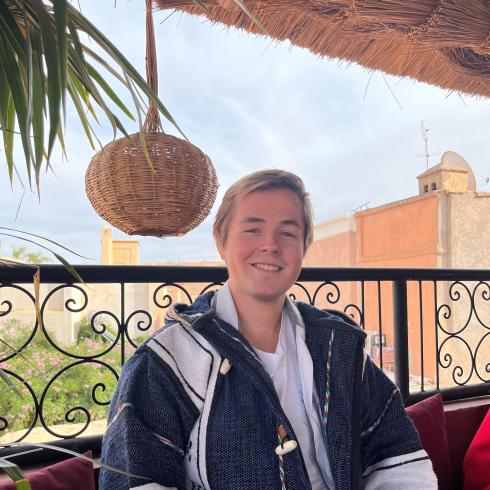
Blaze Grabowski
Hello there! My name is Blaze. I am a student at George Washington University and I study International Affairs. I am also a Global Bachelor Student, a GW program where students study abroad for three semesters.
